The following are the photos from our August 2018 trip to Poeppel Corner, Haddon Corner and Cameron Corner, returning via Lightning Ridge.


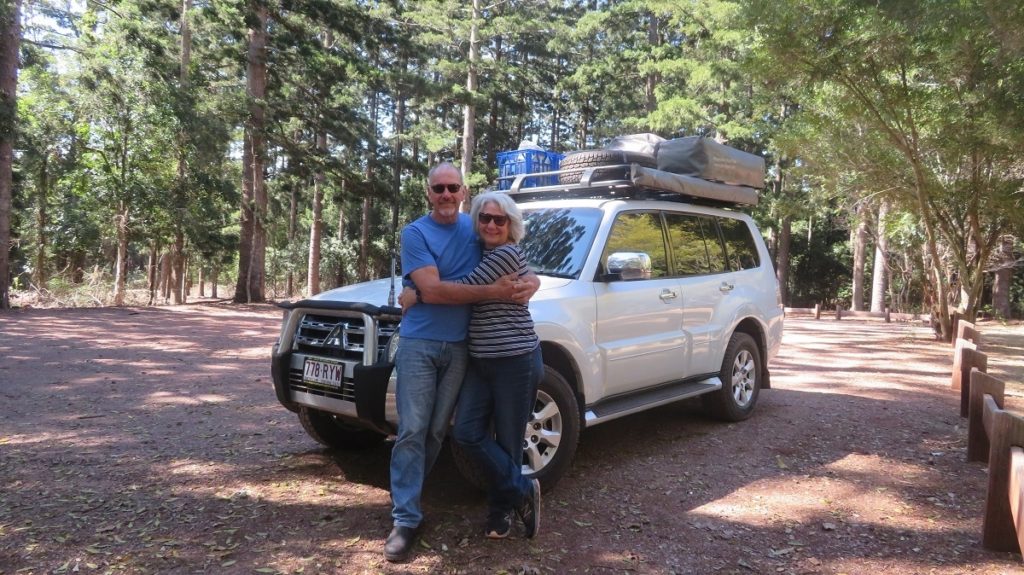
Yay. We’re off on our adventure. Morning tea break at Rogers Park. Looking happy here, but not for long once we discovered we couldn’t open the food drawer.

Campsite at Bowenville Reserve.

First night out celebrations with French champagne.

The ‘toast’ around the campfire … no fires permitted at the moment, unfortunately. Note our rooftop tent and Doug and Leura’s tent in the background.
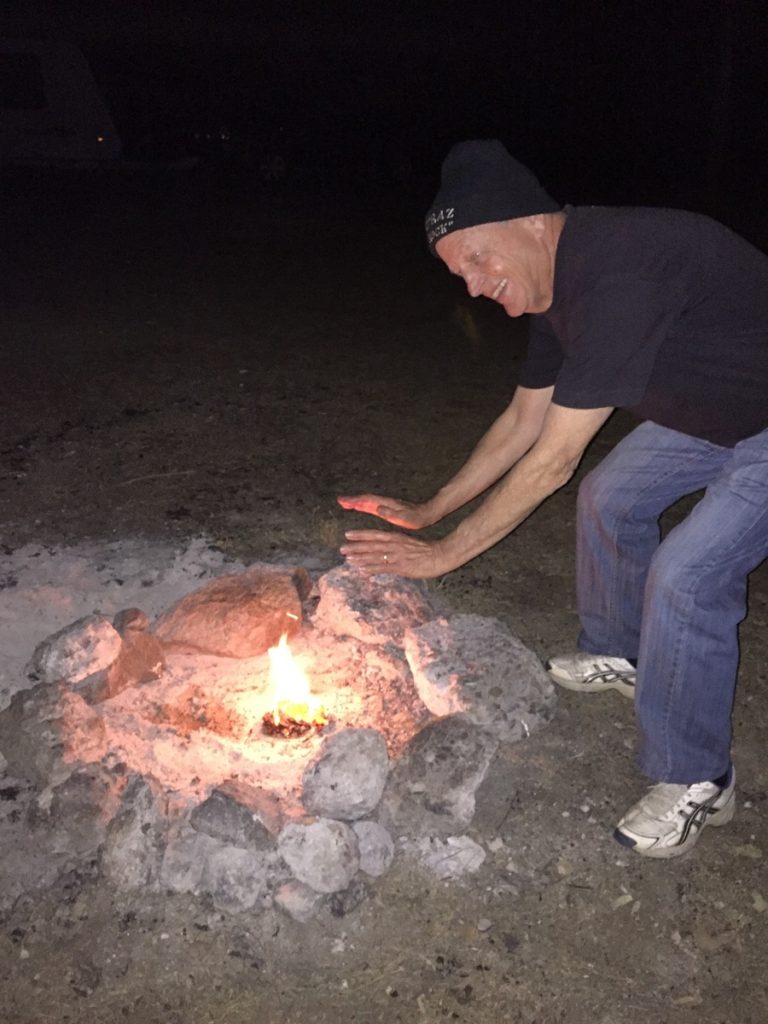
An illicit fire at Bowenville – I don’t think it’s going to be a problem.
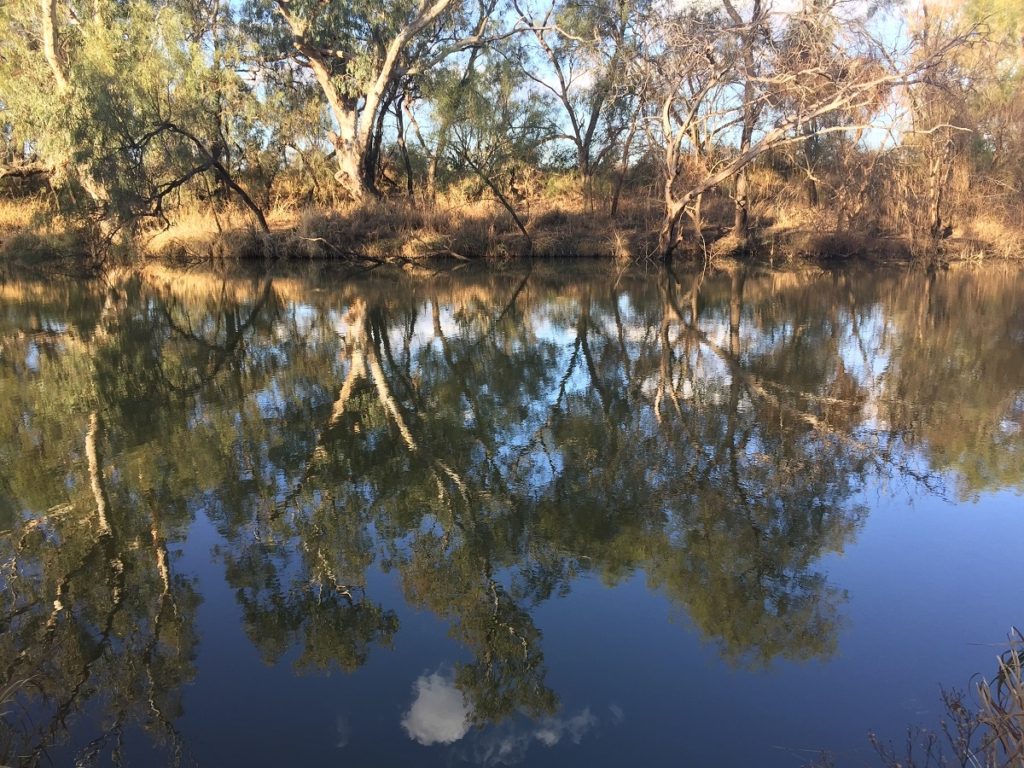
Oakey Creek at Bowenville.

Is it cold Doug and Leura? Roma Gun Club campsite

It’s a bit cold here. Brrrrr. Roma Gun Club campsite

Outside of the artesian spa pool at Mitchell. Sorry, didn’t take the camera in with me.

The Cosmos Observatory

The space shuttle mock-up. All the screens were interactive and very informative.

There’s about 5000 tonnes of space junk orbiting the earth at any one time and this is a bit that came back.

The Steiger Vortex Gun in the park at Charleville. An idea to end the drought – pity it didn’t work.

This informational board explains how the Steiger Vortex Gun was meant to work.

Outside the Bilby Centre.

Wide roads, broad shoulders, low-growing vegetation, flat plains. On the road to Eromanga.

Luckily surfing isn’t why we’re here.

Eromanga Natural History Museum

Entrance to the Eromanga Natural History museum, aka the dinosaur museum.

A dinosaur bone. Note the plaster of paris and alfoil packages on the table.

When a dinosaur bone is found in the field the area around it including the bone is excavated and wrapped first in protective foil and padding then a plaster cast surrounds it. The photograph shows many of these bones in storage, waiting for someone to prep them.

The bone is returned to its cast during the prep phase for protection. Eromanga Natural History Museum.

A fossilised pine tree log from the Cretaceous Period – 95-90 million years old.

A dinosaur bone, as seen through the microscope. Eromanga Natural History Museum

Cooper, Australia’s largest dinosaur. Pretty big guy! Eromanga Natural History Museum
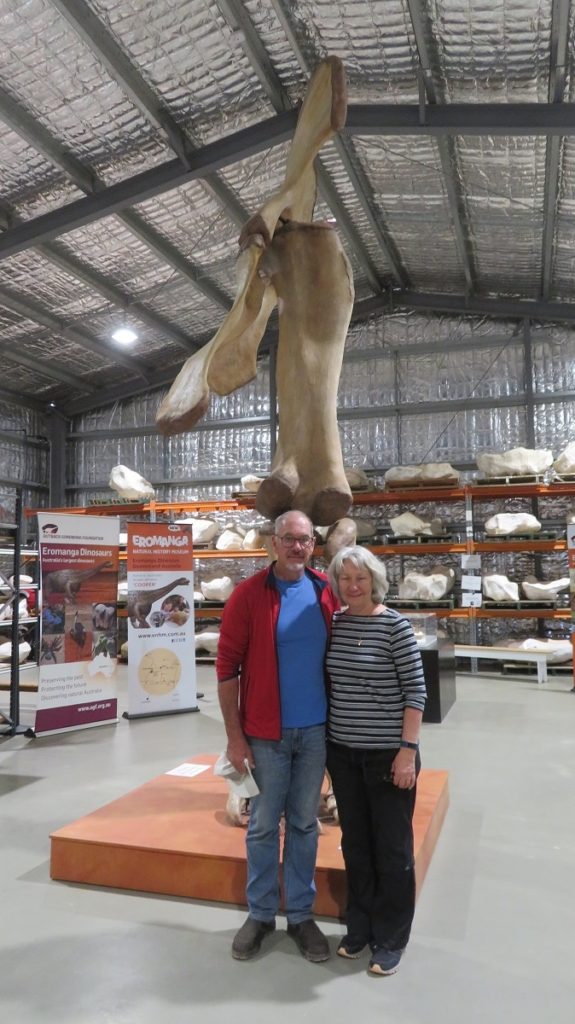
Cooper’s leg and pelvic girdle, and us! This isn’t the actual bone – it’s a 3D printed replica. Eromanga Natural History Museum

Signs of times long gone at Eromanga.

Some of the memorabilia lying around in Eromanga.

Sitting by the banks of the Cooper Creek near Windorah. Our campsite in the background.

Leura and Denise on the banks of Cooper Creek near Windorah.

Pelicans resting at Cooper Creek near Windorah.

A pensive moment, Cooper Creek, Windorah.

How’s this for a restaurant with ambience? Dinner on the banks of Cooper Creek, Windorah.

A perfect night at Cooper Creek
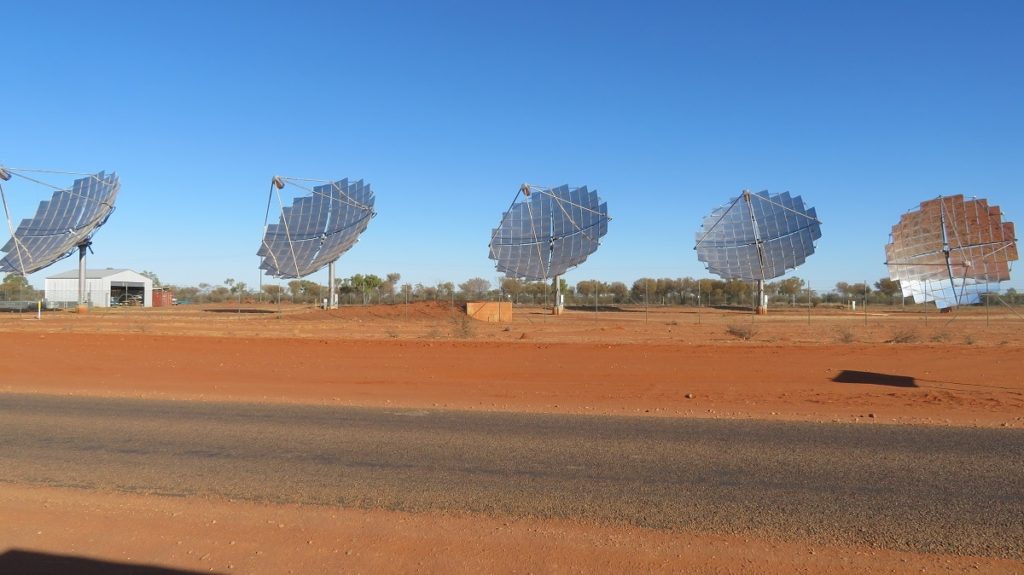
The mirrored solar panels that meet a significant amount of Windorah’s power needs.

The ruins of the JC Hotel at Windorah. The information board described this as a once thriving and very popular hotel, closed down by the local landowner whose staff often over-indulged here.

Yeah, OK, it’s true – there is a hole in the hill. The smaller flat-topped hill has a hole on the right hand side near the top. If you expand this photo you may see it.

Flat plains with just a few weathered hills – this area was once an inland sea.

The road to Birdsville. This section looks pretty good, but some sections were very rough.

The view from Deons Lookout. Deon was a local lad who lost in life in these parts.

The Rainbow Serpent art project. The Rainbow Serpent is a creation story told by indigenous Australians right across the country.

The Rainbow Serpent with informational board describing the art project near Betoota.

Doug, Leura and Denise at the iconic Birdsville Pub.

Inside the Birdsville Hotel, enjoying a drink at the bar. The akubras on the ceiling are from locals – well worn and well loved. All photos taken inside the pub require a donation to the Royal Flying Doctor, one I was happy to make, hoping we’d never need their services.

On top of our first sand dune. Many more to come.
Note the high-vis flags that is a requirement when travelling out here.

The view from on top of the first sand dune, with the the next one in the distance.
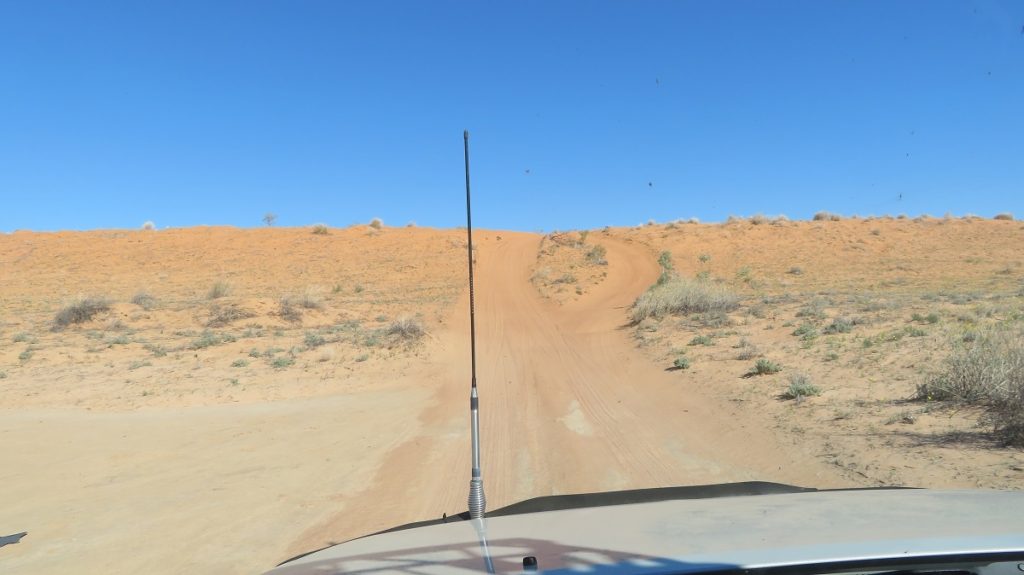
Now which is the easy path and which one the soft one? Only one way to find out…

The flat area between sand dunes. This section is a clay pan which was cut up a bit from last time it rained.

A large salt lake.

About to cross the dry salt lake. We weren’t sure whether it was still a bit wet and waited back to hear from Doug. No problems, dry and hard.

We turned off the QAA Line onto the K1 Line not far before Poeppel Corner. Salt lake in the background.

The turnoff from the K1 Line. The French Line continues across to the western edge of the Simpson Desert.

The ‘Welcome to Country’ sign from the local indigenous people. Poeppel Corner.

This pole marks which of the three States you’re standing in on each side of its surface.

THE corner post! Yay!!

After a looong tough drive we were all pretty happy to be here at Poeppel Corner.

An exciting moment deserving a suitable celebration. Poeppel Corner.

Celebratory drinks at Poeppel Corner.

Beside Poeppel peg, some of us indicating which corner it is on our hoodies!

Doug and Leura beside ‘the peg’.

Sun downers after a long day. Magic night in the Simpson Desert.

Cooking dinner – yep, pretty chilly out here in the desert.

Our campsite in the Simpson Desert, somewhere along the QAA Line.

Sand dunes, sand dunes and more sand dunes.

Well done boys! All the sand dunes, including Big Red behind you.

Big Red successfully conquered.

Wildflowers in Munga Thirri (Simpson Desert NP)
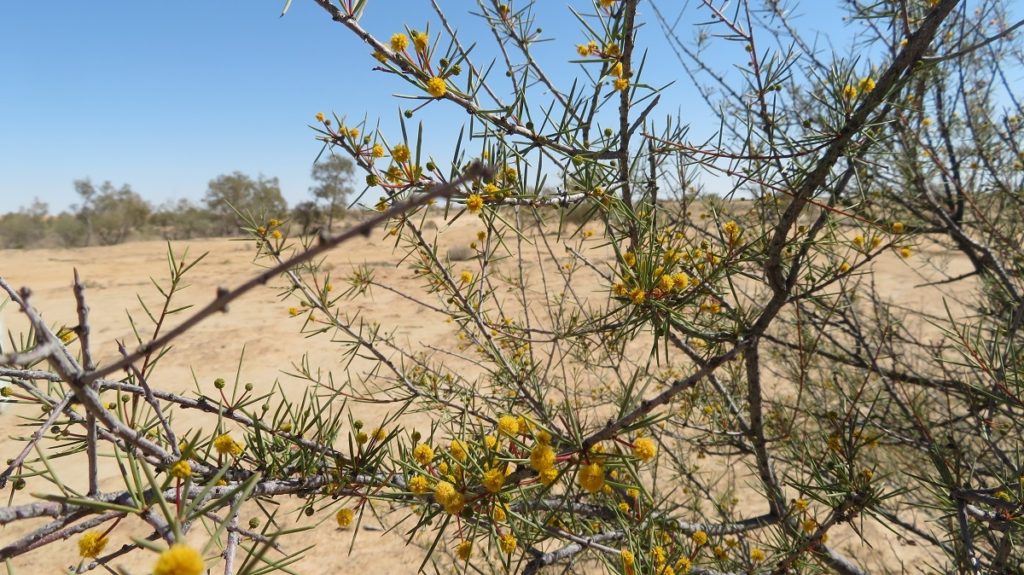
This dark yellow acacia/wattle took my fancy.

Acacia covered in flowers.

A close-up of the blooming acacia.

Don’t know what these apparently dead shrubs are, but they looked so ‘artistic’, their branches being twisted into a tulip shape.

Note the population.

Celebrations all around for a great trip across the Simpson Desert (and Big Red) to Poeppels and back.


The recovery vehicle we were extremely grateful to have not needed.

Eating camel pie at the Birdsville Bakery. It was … OK-ish.
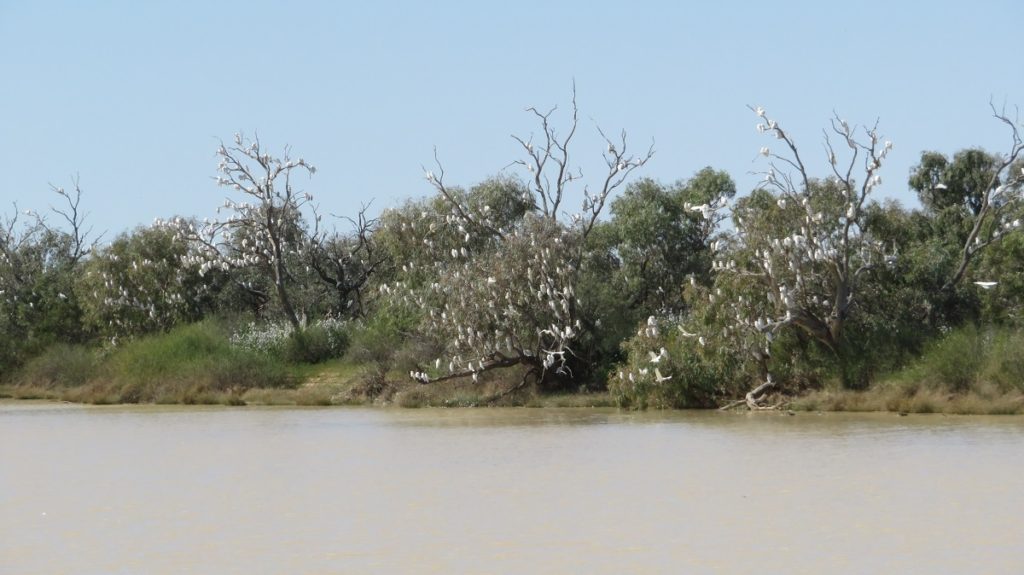
Corella’s in the trees at the Birdsville Lagoon. I wonder if it was these birds that gave Birdsville its name.



The iconic Birdsville Bakery

Very apt.

The Birdsville geothermal plant. Note the steam coming from the water that is coming directly from the Great Artesian Basin.

Not easy to see, but its a cameleer (disappearing behind the shrubs) with his camels. At the entrance to Birdsville
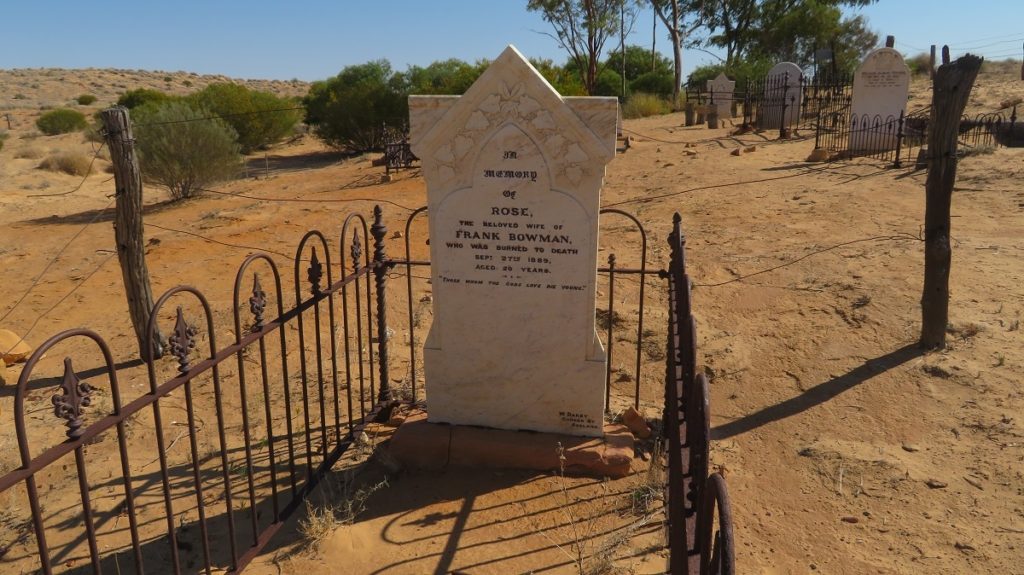
The cemetery at Birdsville

Very simple graves out here. Note the engraving in the rock.

One of the headstones in the cemetery.

The Betoota Hotel.

The old Betoota Hotel. Love the veranda posts.

The ‘publican’ of the Betoota Hotel.

Some of the old wines leftover from prior to closure of the Betoota Hotel.

Would have been a good wine, if it had been stored well. Betoota Hotel

The countryside out here is pretty unremarkable. Haddon Corner turnoff just ahead and the dust from Doug and Leura’s vehicle disappearing into the distance to the right.

Another celebration, at Haddon Corner.

Yep, we’re at Haddon Corner and about to celebrate

Another corner done, another celebration. Haddon Corner

Celebrating our arrival at Haddon Corner

Doug and Leura at Haddon Corner

Our campsite at Haddon Corner.

The finches nests on the roof covering the picnic table.

These beautiful little finches have created amazing mud nests on the roof covering the picnic table. Haddon Corner.

It’s a long way between service stations so we took extra fuel, just in case. It wasn’t needed, but no point carrying it on top when it can be in the tank.

Refuelling! With the fly net on it’s definitely Haddon Corner.
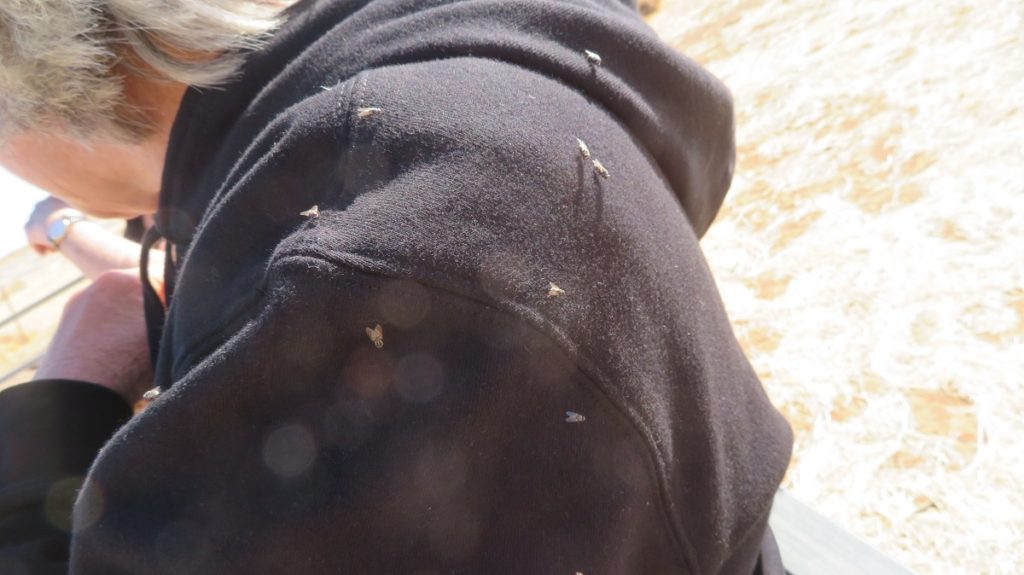
Haddon Corner = flies, lots of flies!
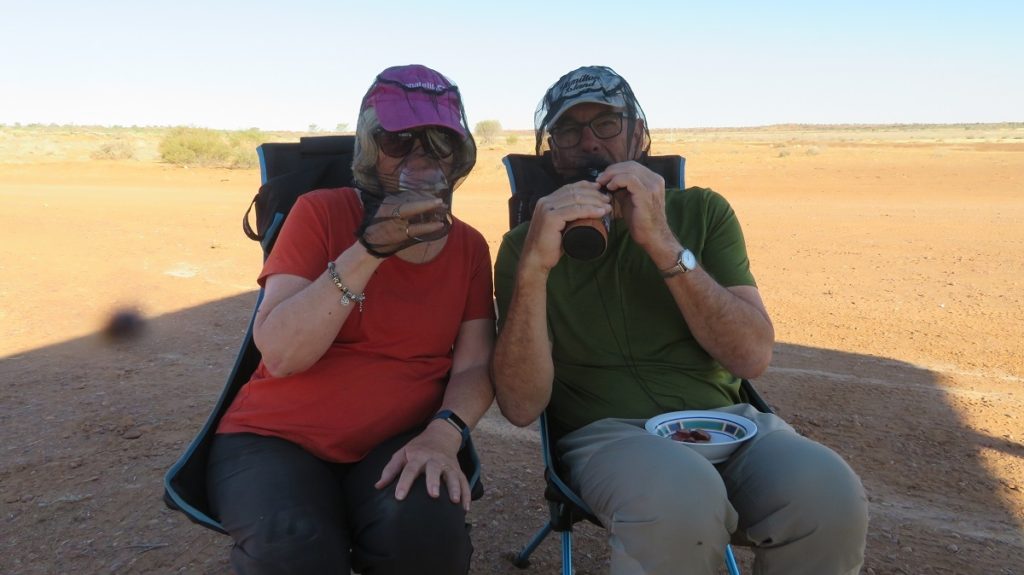
Flies made eating and drinking a challenge.

Sunset Haddon Corner.

Lovely colours of sunset at Haddon Corner.

Good to see some hills in the background, but not much else to commend the view.

Creative fencing. Not sure what it would hold in.

Countryside on our way south.

The new industry out here.
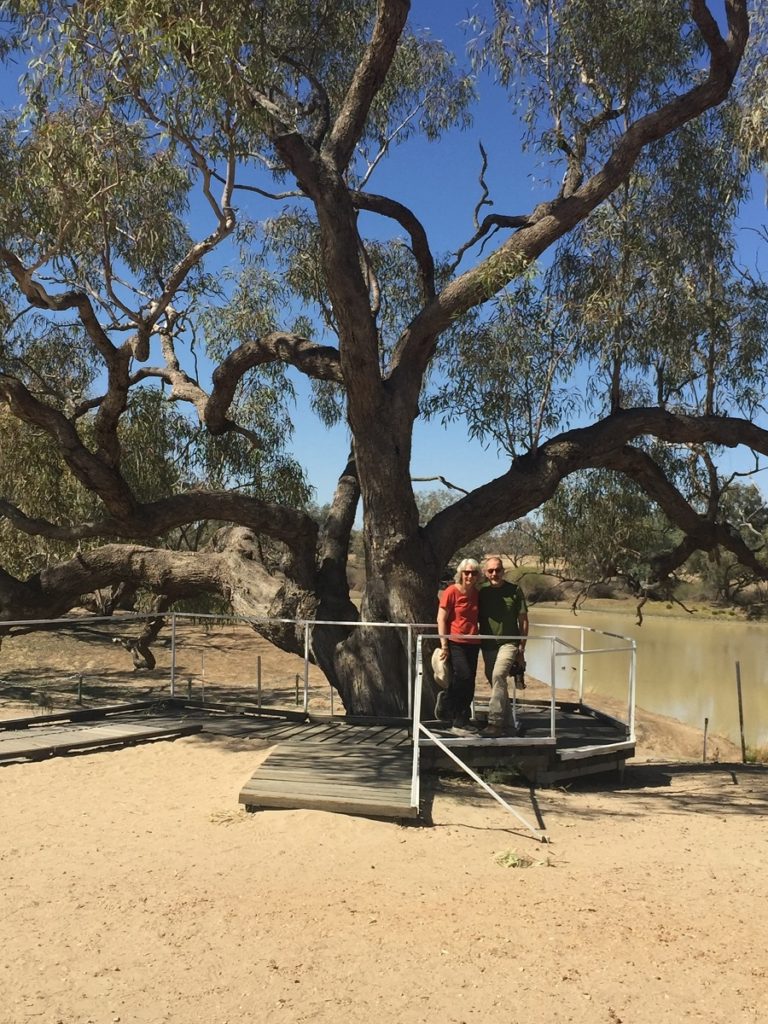
The Dig Tree beside Cooper Creek. The carving is on the creek side of it.

At the Dig Tree, not far from Innamincka.

The original carving on the tree now known as The Dig Tree.

The route of the Burke and Wills expedition.

The Burke and Wills monument with the engraving from the Dig Tree.

Cooper Creek, outside Innamincka.

Cooper Creek at Innamincka

Enjoying at campsite and a beautiful sunset beside Cooper Creek, awaiting the departure of the flies.
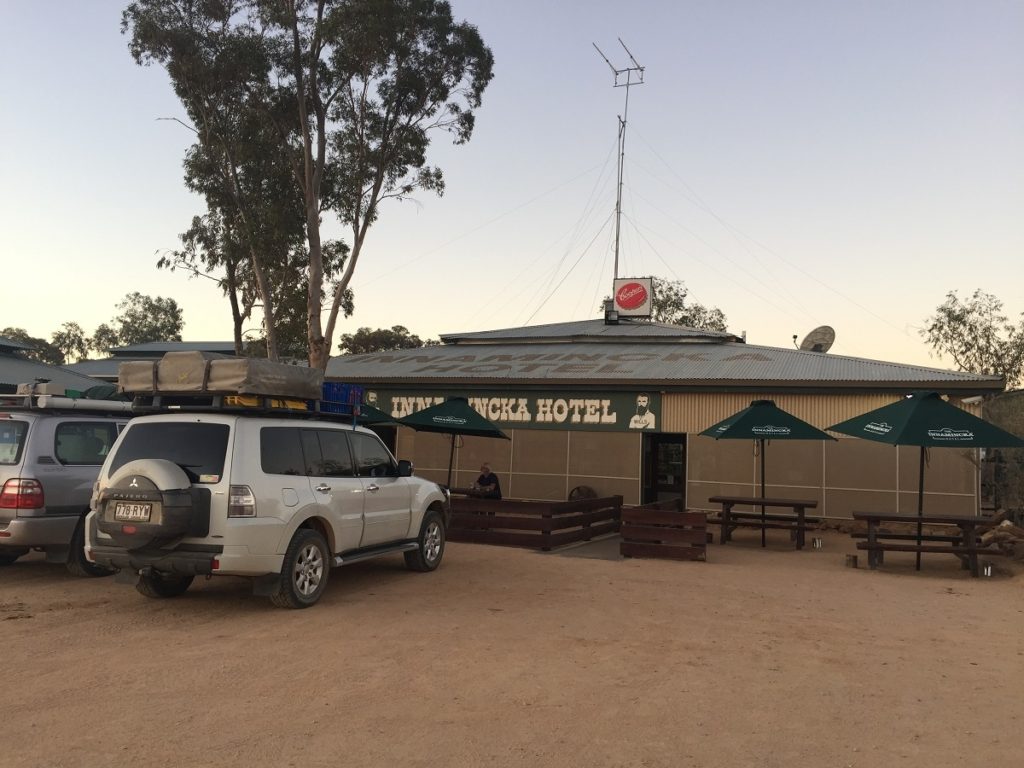
Innamincka Hotel.

Cameron Corner

Cameron Corner

Celebration time again! At Cameron Corner.

We’re at Cameron Corner. Celebrating the last of our Corners.

A very healthy looking young dingo.

A good road – some corrugations, but nothing to complain about. The Strezlecki Track

Camel prints in the sand. Small dunes out here.

We’re starting to see trees! Tooney Gate Road to Tibooburra.

The ‘Corner Store’ at Cameron Corner

The gibber plains

The entrance to Tibooburra is pretty impressive.

The very beautiful Sturt Desert Pea

A replica of Sturts boat at Tibooburra. In August 1844 explorer Charles Sturt set out from Adelaide on an epic journey to find an inland sea. He also wanted to prove that a great river or mountain range divided the continent. He took with him a party of 15 men, 200 sheep, 11 horses, 32 bullocks and seven carts. Indeed, so confident was he of finding this sea he took a 22-foot sailing boat and two sailors to crew it.
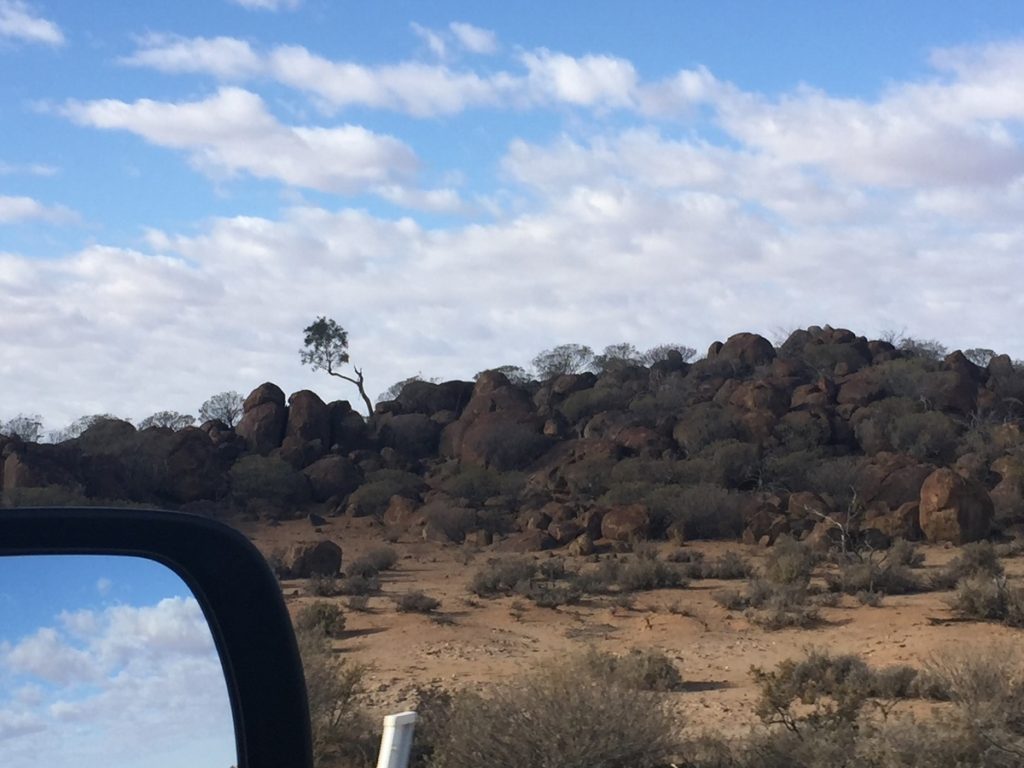
Tibooburra means ‘place of stones’ in the language of the local Wangkumara people. These huge boulders behind the caravan park are testimony to the truth of that. Very unusual because all around is flat and sandy.
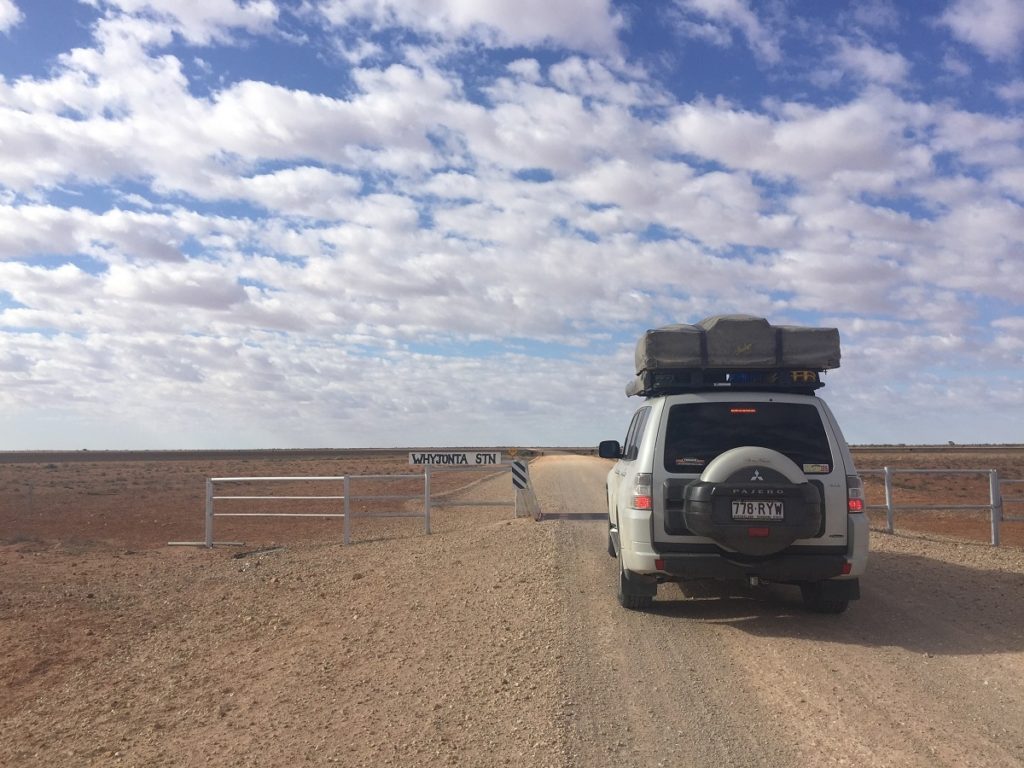
Passing through Station properties on our way.

John Murray painting of a derelict Ghan railway locomotive.

John Murray artwork displayed publicly on the walls outside his gallery.

John Murray art. Displayed on walls outside his gallery.

Stanley the Emu, an 18 metre tall emu. Stanley is made from scrap metal including VW Beetle chassis, hoods and doors, satellite dishes for his ears, recycled metal from the old Dubbo Police Station & steel girders for his feet & neck.

Stanley, the 18 metre tall emu made from scrap metal – including a VW beetle chassis.

So many mining places look like this.

Recycling old car doors. These would be just as good as street numbers out here.

Sculpture made entirely of horse shoes. In the park in Dirranbandi.

Memorial to the men who fought on horseback in World War I. Many of them and their horses left from Dirranbandi.
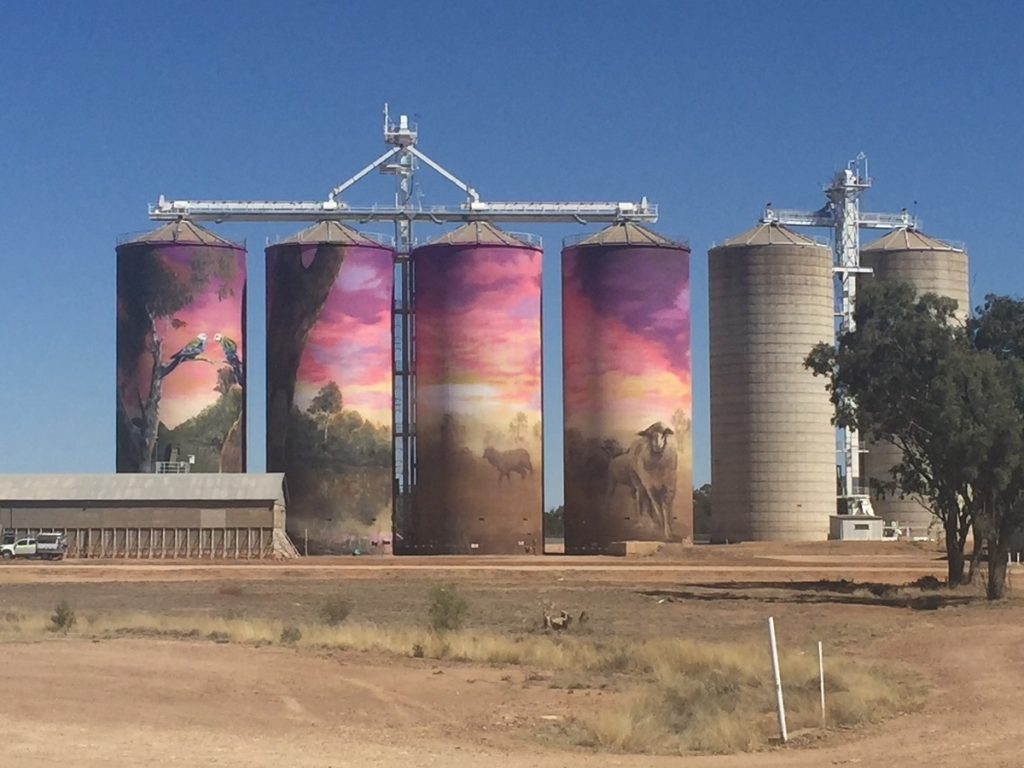
Silo art at Thallon.

Lovely path along the river at Nindigully.

At the iconic Nindigully Pub

Having a drink at the bar in the iconic Nindigully Pub
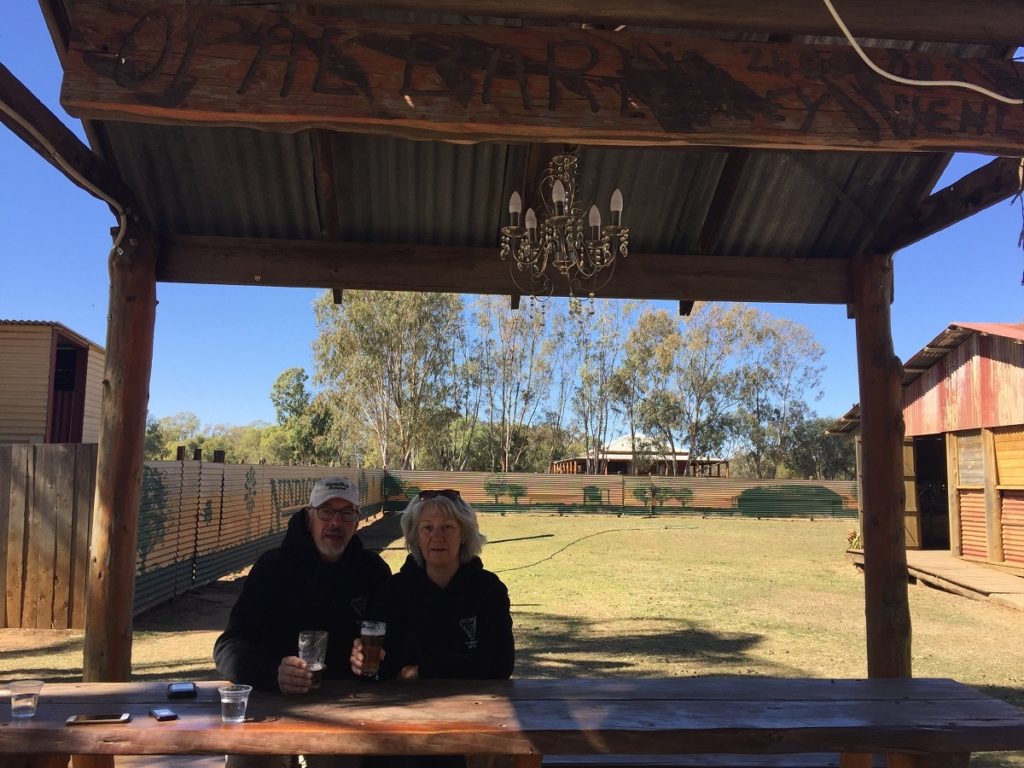
Lunch in the beer garden of the Nindigully Pub. Note the lighting!

The Surat aquarium displays indigenous fish. Meet a Murray River Cod.

Now THIS is an aquarium – at Surat.

A scale replica of the complicated system of harnessing seven horses to pull the Cobb and Co stage coaches.

A Cobb and Co stagecoach at Surat.

One of the museum displays and information on wool classing in Surat.